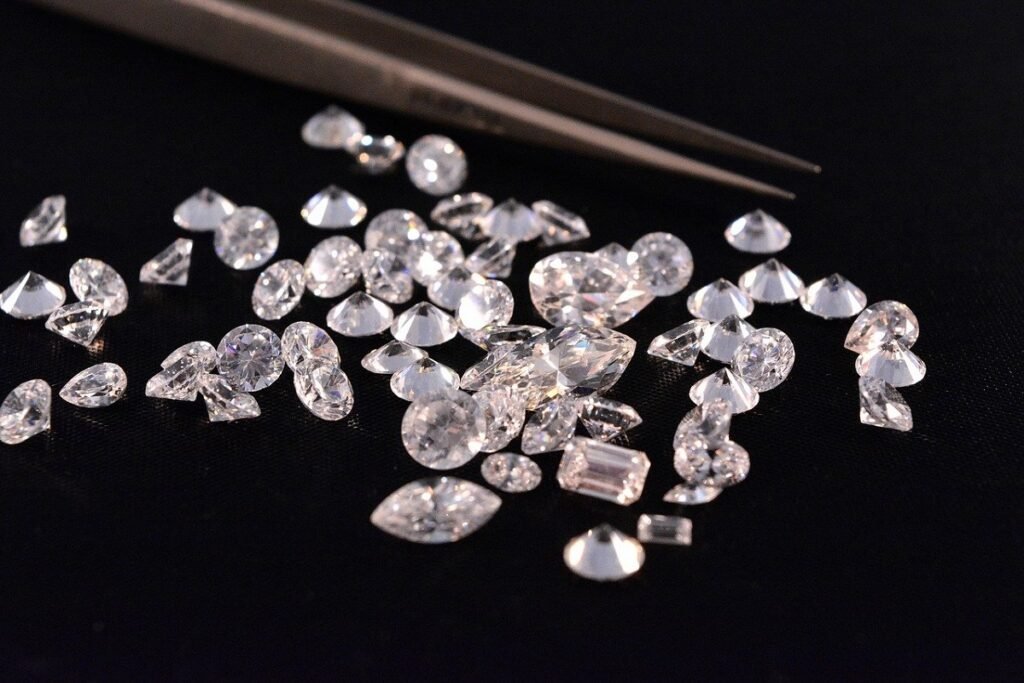Are you a fan of Leonardo DiCaprio? Then you must have seen his 2006 movie, “Blood Diamond.” The movie centered around a diamond smuggler (DiCaprio) and the exploitative, brutal, and often murderous world of diamond trading. It unmasked the facade of well-heeled diamond traders immersed in shady diamond dealings. The movie was very entertaining though tragic. But it awakened the world to the evils of blood diamonds trading and paved the way for conflict-free diamonds. So what is a conflict free diamond? Find out below.
Conflict-free Diamonds
Max is planning to give his long-time girlfriend a diamond engagement ring (not unlike the one in this Blue Nile review). He thought that it must be worthy of his undying love for her. The problem is that he doesn’t know where to get it and what it would look like.
Some friends suggested buying it through the grapevine where prizes are cheaper. Others, however, suggested getting it from legit jewelry stores. It may be a bit pricey but it is clean—no chaos, controversy, or blood was shed in its journey from the mines. His better judgment prevailed—he bought an ethical and conflict-free diamond ring.
But what are they, really?
The Kimberly Process
In the simplest terms, conflict-free diamonds are diamonds that are not used to finance civil wars or political unrest. On the other hand, ethical diamonds have a wider scope. They are stones mined in the spirit of fair play and safe working conditions. Ethical diamonds are those mined using environmentally sound practices with human rights observed and respected.

In May 2000, diamond-producing states met in Kimberley, South Africa to discuss ways to stop the trade of diamonds that finance rebel movements and undermine legitimate governments. Its aim is to follow diamonds from mine to market to make sure that they are free of any form of conflict or unethical practices.
That meeting came to be called the Kimberly Process (KP). And it did not stop there. Its agenda was included in the United Nations’ 55th General Assembly meeting to urge diamond-producing states to address the industry’s damaging social effects and agree to a framework for reducing these negative influences.
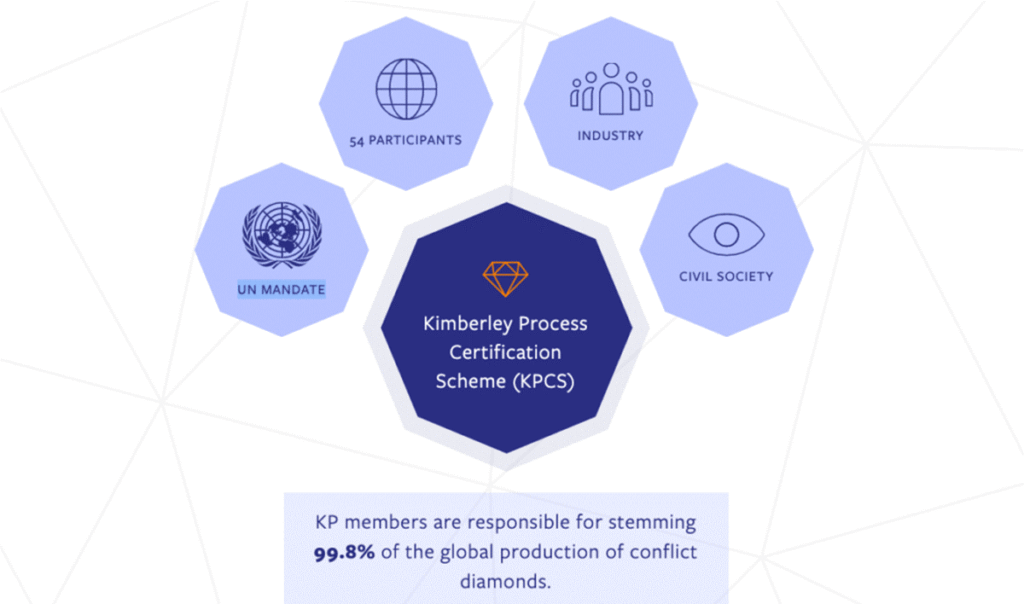
The Kimberley Process, or KP, reduced the production of blood diamonds (shown in the chart). From thereon, any diamond in the market must have a KP certificate to prove that they are conflict-free and ethical.
The Scope of the KP
Diamond mining always carries with it environmental, social, and human rights issues—regardless of where it is. On the positive side, fortunately, is that many consumers are now aware and conscious of these issues and tend to shy away from diamonds tainted in blood or unethical practices. They now opt for conflict-free diamonds.
A conflict-free diamond is a diamond mined and shipped without any connection to a rebel or terror group. Or produced by mining companies with acceptable employment, safety, and environmental practices. They are safely mined; with no societal or environmental issues arising from their operation.
And this is where the KP plays an important role: to guarantee that diamond producers abide by legally and ethically accepted practices.
Any diamond outside of the parameters set by the KP is called a blood diamond, conflict diamond, or unethical diamond (mines under sub-human conditions)
The KP is open to all countries willing to abide by its requirements. There are currently 59 participants, representing 85 countries. The European Union, with its 27-member countries, is considered a single participant. All in all, KP members account for 99.8% of the global production of rough, KP-certified diamonds.
Kinks in the system
Despite its progress, the KP has not totally eliminated the illegal diamond trade. Not only is the task gargantuan, but the KP also does not have “policing” powers.
At best, it only provides a scheme for “proving” that a diamond is not a conflict diamond—not an easy feat in the rural and often chaotic world of African outback. And there are inherent systemic problems as well. Currently, it is practically impossible to identify a conflict-free diamond from that immersed in human rights and environmental violations.
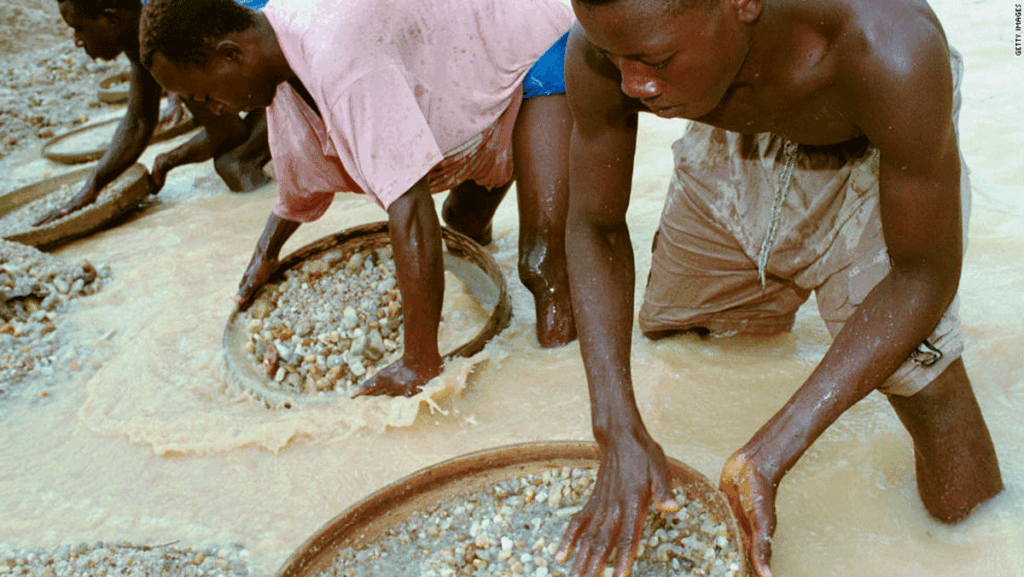
For example, the African miners (shown above) are generally poor and use simple and primitive equipment. They are small-scale and often operate outside of legal standards; underpaid and exploited. They operate on a hand-to-mouth basis, making them easy prey to unscrupulous diamond traders. Having them follow the KP guidelines is next to impossible.
Minimized, not eliminated
The KP has significantly reduced the number and viability of conflict diamonds but has not totally eliminated them. The production of conflict diamonds continues in Sierra Leone even though the country’s 11-year civil war ended in 2002. Other countries doing the same are Angola, the Democratic Republic of Congo, and Liberia.
Thus, after more than a decade of trying (and being unable to stem the flow of conflict diamonds), the scheme was abandoned in 2011.
Are there Conflict Free Diamonds?
Yes, there are conflict-free diamonds in the market. In fact, these three types are still very much alive:
Recycled diamonds
These are already-worn diamonds from heirlooms or damaged jewelry items with settings stripped off. They are either sold as-is or cleaned up and re-cut if necessary. Recycled diamonds are the largest source of diamonds in the market. And they are cheaper, too.
Lab-created diamonds
Lab-created diamonds are those created in technologically sophisticated laboratories. They are chemically and optically identical to mined diamonds with no environmental issues associated with them. Lab-created diamonds are cheaper and more sustainable.
Natural diamonds
Natural diamonds are those that are taken from the ground and subject to a lot of societal and environmental controversies. They are also the subject of this article.
Diamond Identification
These days, it can be safely said that all diamonds on the market are conflict-free. While there is no doubt about the first two types, there will always be skepticism regarding the third.
You see, diamond trading is a complex business. Stones change hands dozens of times from the mines until they reach a retailer’s shop. While each stop is supposed to have a KP certificate of compliance and authenticity, there is no guarantee that those of questionable origins will not find their way into the good lot.
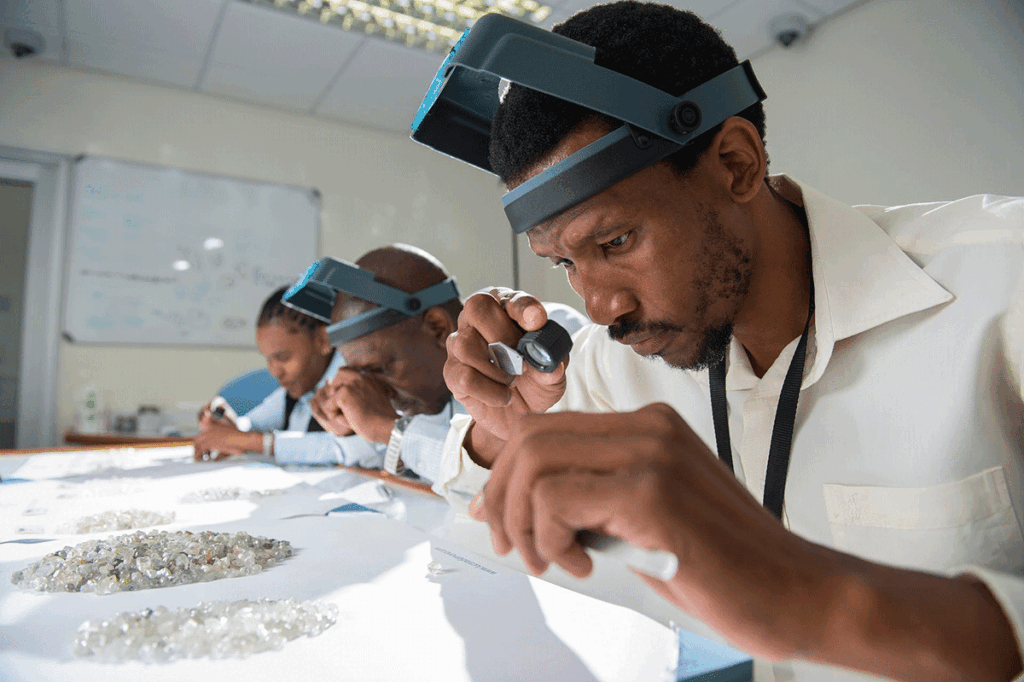
Fortunately, some diamond producers have taken it upon themselves to make sure their diamonds are identifiable against the rest. Good examples of these are the Canadamark Diamonds of the Arctic Canadian Diamond Company Ltd. and Bitcoin Diamonds of Brilliant Earth.
Canadamark Diamonds
The Canadamark program is a strategic initiative of the Arctic Canadian Diamond Company Ltd to assure the integrity of their diamonds from mines to retail.
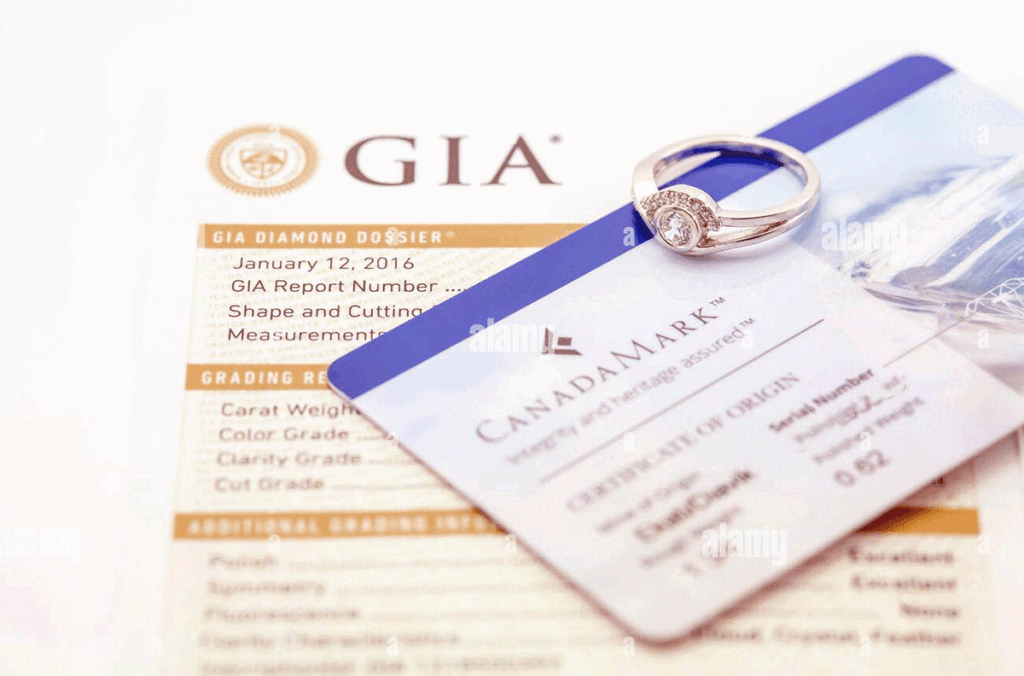
The company set up a system that provides a unique serial number on every stone that comes out from its mines that can be tracked all the way to the retailer’s shop. And if you buy one, you can upload that number to the company’s website to verify the authenticity of your purchase. This is a foolproof hedge against some dealers who may claim that their gems are of Canadian origin but without the Canadamark certificate or serial number.
Canadian diamonds are adored for their beauty and quality. Only a select few find their way to the market. Canadian mine companies are known to be one of the most ecologically-conscious mining companies in the world.
Though a recent entry in the diamond-mining business, consumers are catching on. Canada has become the third-largest supplier of gem-quality diamonds in the world
Blockchain Diamonds
An initiative pursued by Brilliant Earth to track the authenticity of its diamonds is by using Blockchain—the technology behind bitcoin.
This system creates a chain of information that’s practically impossible to manipulate. The system tracks the path a diamond takes from mine to customer. Millennials and Gen Z customers find the system appealing. They can check the authenticity of their purchase and the transparency of the transaction.
Brilliant Earth has currently 10,000 blockchain-enabled diamonds that are tracked from the mine through the cutting and polishing process and finally to customers.
These two initiatives are but a drop in the bucket in the overall effort of assuring that only conflict-free diamonds find their way to the market. But they are noble steps towards a noble goal.
Where Can I Find Conflict Free Diamonds?
KPI-certified diamonds can be purchased from any reputable diamond dealer. But if you want to erase any doubt about the cleanness of your purchase, and want to specifically know where to buy conflict-free diamonds, you may try the following:
James Allen
The company says, “Every diamond we sell is certified conflict-free in compliance with the Patriot Act, the Kimberley Process, and United Nations resolutions. Our internal guidelines exceed these government requirements…”
The company also sells lab-grown diamonds
Blue Nile
The company has zero tolerance for conflict diamonds. And its aim is to “only purchase diamonds through the largest and most respected suppliers who, like us, proudly adhere to and enforce the standards established by the Kimberley Process…We will continue to support and promote any process that works to uphold legitimacy in the diamond trade.”
The Blue Nile also sells lab-created diamonds but only for earrings, necklaces, and bracelets, like the one in this Jared review.
Whiteflash
The company also sells lab-created diamonds.
Brian Gavin Diamonds
Brian Gavin pursues these ethical practices in the conduct of its diamond business:
- Conform to all laws in the jurisdiction of our operations
- Conduct our business with integrity, sincerity, honesty, and transparency
- Work to protect the industry and our clients against fraud, misrepresentations, and unethical business practices
- Pursue an anti-money laundering program to fully comply with the USA Patriotic Act..make every assurance to guarantee that we do not deal in the flow of conflict diamonds. We fully comply with the Kimberley Process Certification Scheme and the World Diamond Council Systme of Warranties.
- Fully and accurately disclose the material characteristics of the products and merchandise we sell.
- Take all necessary steps to ensure the security of all our product shipments.
- Respect commercial confidentiality and the data privacy of our employees, business partners, and customers.
- Strive to continuously improve our professionalism and expertise, as individuals and as a company.
The company does not sell lab-grown diamonds.
Ritani
The company promises to “Not only do we stringently adhere to ethical standards honoring hard-working people internationally but our conflict-free engagement rings are handcrafted in the United States, contributing to local economies right here at home. Ritani goes above and beyond to ensure that all of our jewelry supplies—from diamonds to precious metals—are sourced from companies that treat their workers fairly. We carefully select our retail partners, ensuring their commitment to upholding all standards established by the Kimberley Process.”
Ritani also sells lab-grown diamonds.
Now that you have a good idea where to find them, you must be wondering, are conflict-free diamonds more expensive?
As a stone, it may have some price premiums. But remember, diamond price is still dictated by GIA’s 4Cs. And many things come into play when determining its retail prices.
For example, the cut. On a per carat basis, the emerald or Asscher cut is cheaper than other cuts.
Then there’s the setting. The cheapest engagement setting is the solitaire, while the halo is on the upper end of the price bracket.
Are Conflict Diamonds Real Diamonds?
Conflict diamonds are very real diamonds. Just as real as lab-grown, recycled, or natural diamonds. What makes them notorious is the the purpose of the business and how it is done.
Conflict diamonds (also called called “blood diamonds”) are illegally traded to fund conflicts in war-torn areas, particularly those in central and western Africa.
Conflict Free Diamonds: Saving People One Stone at a Time
The United Nations defines conflict diamonds as “…diamonds that originate from areas controlled by forces or factions opposed to legitimate and internationally recognized governments, and are used to fund military action in opposition to those governments, or in contravention of the decisions of the Security Council.”
On top of that, they are mined without concern for the environment and working conditions. The ordinary miners—those who break their backs hauling tons of stones to the surface—work under sub-human conditions and pair below subsistence salaries.
Trading in conflict diamonds has put thousands of men, women, and children in slave-like conditions without any health benefits, and any hope for a better future.
It is against this backdrop that the Kimberley Process became necessary. Today, 99% of all diamonds in the market are conflict-free and ethical. A minuscule portion, however, remains like a thorn in the side of the diamond business.
Now, that you know what conflict diamonds are, you might be interested in knowing the other side of the coin. Check out our article “What Are Ethically Sourced Diamonds & Where to Buy Them.”

